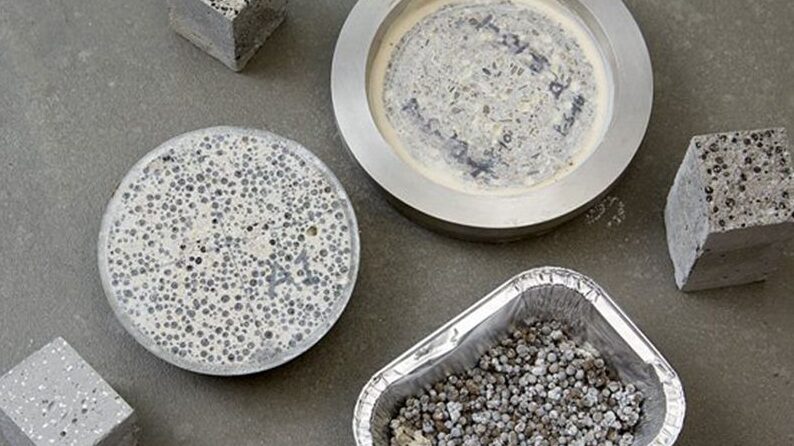Related:
Biotech Talent Recruitment Requires Innovation
Engineers and scientists are tackling problems facing our buildings and our planet by researching and developing new materials on an ongoing basis. By re-imagining traditional approaches they are creating materials that are stronger, lighter, more versatile, and less wasteful. Some of these innovations are here now, while others are coming; some are practical for widespread use, while others are more niche.
Engineering Graphene Materials with 3D Printers
Fans of metal music consider it’s ‘heaviness’ to be its greatest quality. Those who work with actual metal materials, on the other hand, see the advantages of a lighter alternative, so long as strength is not compromised. It’s a guiding principle for those developing new materials, such as the MIT research team that found a way to make a graphene object that ‘has 10 times the strength of steel but only a fraction of the weight’1 using a 3D printer.
Traditional 2D graphene is light, but flimsy. Solving problems is what researchers do, so the team got to work testing various hypotheses, first through simulators, then by actually printing them.
Through a combination of heat and pressure they were able to compress small flakes of graphene, creating a stronger, more stable structure.1 The lightweight product has an enormous surface area in proportion to its volume and could be useful in airplanes, cars, buildings, and even filtration devices.
Rigorous testing is an important part of the process; researchers must learn exactly how strong and effective their products are and under what circumstances. In this case the results were encouraging.
“The new configurations were made in the lab using a high-resolution, multi-material 3-D printer,” writes Lucas Mearian for ComputerWorld. “They were mechanically tested for their tensile and compressive properties and simulated using the team’s theoretical models. The results from the printed models and the simulations matched.”1
Improvements in Lumber
When one thinks of innovation, wood may not be the first thing that comes to mind, but think again. Cross laminated timber provides increased strength and durability, a lower carbon footprint, and it’s even fire resistant.2
“Consisting of small pieces of softwood laminated together to become a larger structure, it is glued under tremendous pressure in opposing directions to give it superhuman strength,” says Volvoce.3
CLT can be made to measure, potentially decreasing construction timeframes, and offers a natural looking aesthetic, which means that its future is looking up…way up.
“With its alternating, layered design, it’s practically as strong as reinforced concrete and structural steel, and could theoretically be used in the same way as the latter in similarly-designed structures.”4
Indeed the Carbon 12 building in Portland Oregon took CLT to the skies. At 85 feet and eight stories, the structure is said to be resistant to earthquakes and other natural disasters.5
Self-Fixing Concrete
The usage of concrete in construction is so prevalent that our very cities are referred to as ‘concrete jungles’ but, with cracks in the foundation (literally), it’s time for concrete action.
Gaining popularity is self-fixing concrete. Aquicore explains:
“The solution involves small, water-permeable capsules that can be mixed into wet concrete. Once the concrete sets and dries, the spores exist in suspended animation – just like packets of dry yeast. When a crack opens in the concrete and fills with water, though, they begin to grow and produce calcite, a crystalline form of calcium carbonate found in marble and limestone. The calcite fills the cracks in the concrete and hardens, preventing the crack from getting any wider.”2
Building a Better Brick
Bricks, too, are expanding their capabilities. Hollow clay bricks use their unusual shape to block the sun, allowing buildings to breathe while also preventing noise intrusion. Their 3D properties also provide an interesting aesthetic.
Other bricks look to reuse or repurpose materials, utilizing wool, seaweed polymer, or even cigarette butts.
Bricks made by BioMASON are not heated in kilns but rather ‘grown’, as rectangular moulds of sand are injected with bacteria that wraps around the sand and hardens. The process is said to utilize less energy than traditional brick production.6
Human ingenuity knows no bounds as evidenced by innovative groups and individuals using materials on hand to solve problems worldwide. Ghana’s ‘rammed earth’ construction compresses earth in wooden boxes.7 Elsewhere, insulation is being made from trash.2 Chipboard is being made from potatoes.3 Hempcrete is about what it sounds like.8 The engineers, researchers, and scientists imagining and developing these new materials are owed a debt of gratitude for their wondrous imagination, their hard work, and for presenting new possibilities for continuous improvement.




